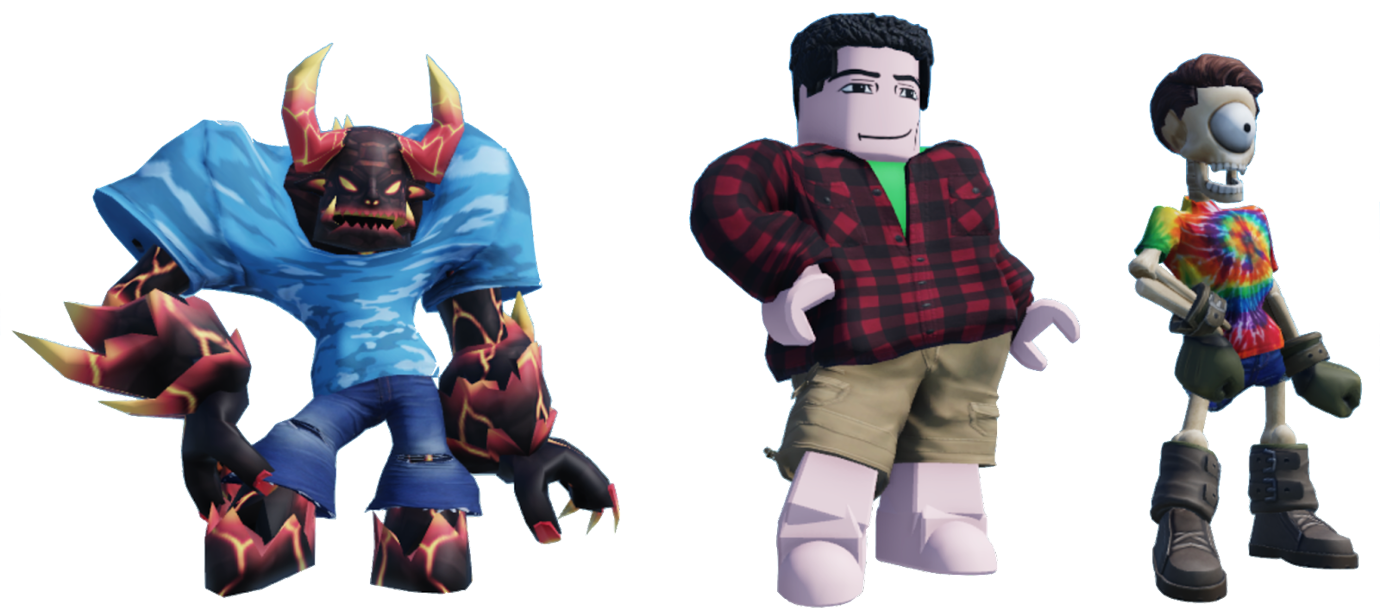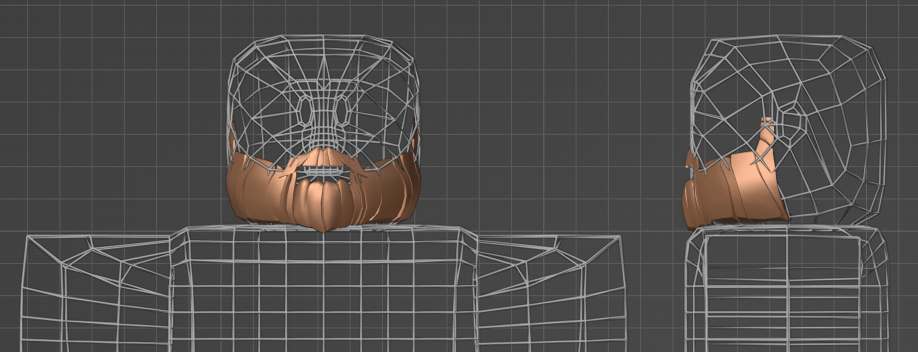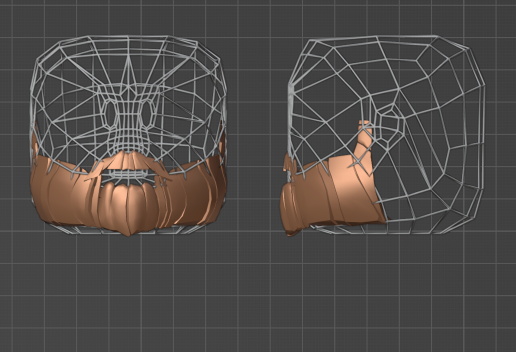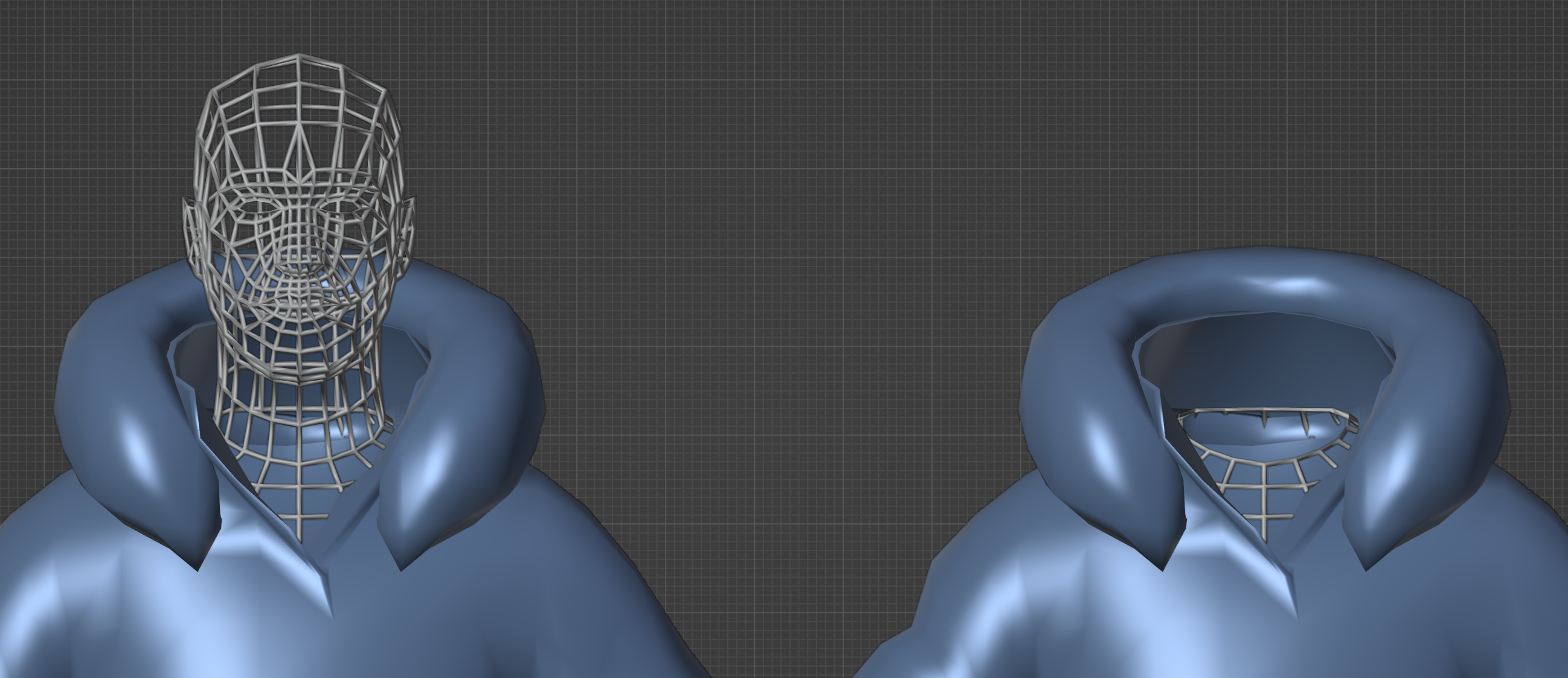Chuyển đổi skin tự động cho phép quần áo có lớp và phụ kiện mặt được biến dạng chính xác cùng với mô hình nhân vật nó được gắn kết mà không cần phải skin phụ kiện nó chính.Thay vì nhiệm vụ phức tạp của việc thủ công neo và làm mịn mô hình trong phần mềm mô hình 3D, bạn có thể sử dụng tính năng này để chuyển hoặc tạo dữ liệu làm mịn cho phụ kiện.Khi sử dụng Chuyển đổi Skin tự động, Roblox Engine tạo và áp dụng skinning trong thời gian thực. Không cần skinning của định dạng phụ kiện là cần thiết để sử dụng Chuyển đổi Skinning Tự động .Trên thực tế, các phụ kiện có da tự động hoạt động tốt với hầu hết các nhân vật họ được gắn vào, ngay cả khi những nhân vật đó có số khớp, xương khác nhau hoặc sử dụng loại da khác, và các phụ kiện di chuyển chính xác với các nhân vật khi chúng diễn hoạt.

Skinning vẫn là một khái niệm quan trọng đối với việc sản phẩmnhân vật, và nếu bạn đang tạo nhân vật tùy chỉnh, bạn có thể muốn áp dụng dữ liệu skinning cho mô hình để tạo một nhân vật có những tư thế và hoạt họa tự nhiên hơn.Đối với thông tin về cách làm mờ một khối lượng, xem Làm mờ một mô hình humanoid .
Bật chuyển đổi skin tự động
Để bật quá trình chuyển đổi skin tự động, bạn phải bật đặc tính AutoSkin trong WrapLayer instance của lớp trên cấp Accessory bạn muốn tự động skin, sau đó đặt nó thành một trong các giá trị sau:
- Disabled : Vô hiệu hóa quá trình chuyển đổi skin tự động. Đây là giá trị mặc định.
- EnabledOverride : Bật quá trình chuyển đổi skin tự động, và cho phép nó thay thế bất kỳ thông tin skin hiện có nào được tìm thấy trên phụ kiện khi chạy thời gian thực.
- EnabledPreserve : Bật quá trình chuyển đổi skin tự động, nhưng không cho phép nó thay thế bất kỳ thông tin skin hiện có nào được tìm thấy trên phụ kiện trong thời gian chạy.Nếu không có bất kỳ skinning nào để duy trì, quá trình chuyển skinning tự động tạo dữ liệu skinning mới.
Khi không có bất kỳ dữ liệu skinning nào trên phụ kiện, hoặc nếu bạn chọn để thay thế bất kỳ dữ liệu skinning hiện có liên quan đến phụ kiện, Roblox Engine tính toán dữ liệu skinning từ hình học và lồng của nhân vật, sau đó dữ liệu skinning mới và giàn liên quan đến phụ kiện lái các biến dạng và chuyển động của phụ kiện theo nhịp với hình học nguồn bản thân.
Tốt nhất các thực hành
Trong khi chuyển đổi skin tự động thường hoạt động tốt hơn so với skin thủ công, có một số tốt nhất để giảm hành vi bất ngờ với skin da trang trí.Giống như tất cả các quá trình mô hình hóa, liên tục kiểm tra quần áo và phụ kiện mặt trên các loại avatar khác nhau để đạt được kết quả bạn muốn.
Sửa lồng nhân vật
Bạn có thể thay đổi lồng nhân vật cho các phụ kiện để biến dạng chính xác lên bề mặt nhân vật mong đợi bằng cách chuyển chuyển da tự động.Ví dụ, tự động tách da có thể gây ra sự biến dạng của quần áo có lớp do một phần cơ thể không chính xác vì quá trình chuyển đổi dựa trên khoảng cách gần nhất giữa phụ kiện và lồng bên trong của nó.Trong ví ví dụ / trường hợpsau, một phụ kiện ria mép được mô hình hóa bằng một chiếc lồng toàn thân kiểu khối.Điều này gây ra việc lông mi bị biến dạng không đúng vì một số phần của lông mi ở gần ngực trên của lồng nhân vật thay vì cằm:

Để ngăn chặn một phụ kiện có nhiều lớp không sử dụng dữ liệu skinning từ khu vực không mong muốn của địa hình nhân vật, bạn có thể mô hình hóa tài sản của mình trên một chiếc lồng mannequin khác của nhân vật.Ví dụ, một nhân vật kiểu khối sẽ đấu tranh với việc cạo lông vùng thân, nhưng một nhân vật có cổ thực sự, như một hình người, sẽ không có vấn đề này.
Ngoài ra, bạn có thể loại bỏ một phần lồng bên ngoài mà phụ kiện lớp truy cập không nên được trang bị. Đây không phải là một quy trình làm việc hợp lệ cho tài sản dành cho Marketplace , nhưng bạn có thể sử dụng nó cho tài sản trong kinh nghiệm hoặc tài sản cho mục đích khác.Ví dụ, hình ảnh sau đây cho thấy cách lồng bên ngoài đã được sửa đổi như thế nào để chỉ bao gồm hình học đầu.Với cải tiến này đối với lồng bên ngoài, khi bạn chuyển dữ liệu skinning tự động, lông và lồng một phần bây giờ chính xác chuyển skinning chỉ từ định dạng đầu.

Quan trọng là phải lưu ý rằng bạn cũng có thể giải quyết vấn đề biến dạng trước đó bằng cách sử dụng một lồng khác hoàn toàn.Ví dụ, nếu bạn sử dụng một lồng hình người hơn với nhiều không gian giữa ngực và cằm, râu là gần nhất với đầu thay vì ở gần khu vực ngực hoặc cổ, do đó Tự động chuyển skinning sẽ không chuyển dữ liệu skinning từ các khu vực đó.

Bằng cách sửa đổi các khu vực khác nhau của lồng của nhân vật, bạn có thể đảm bảo rằng quần áo và phụ kiện mặt của bạn bị biến dạng theo mối quan hệ với khu vực chính xác của cơ thể hoặc đầu, chẳng hạn như sửa đổi các tay của mô hình nhân vật để váy không sai lệch kết nối với chúng trong khi một nhân vật đang chạy, hoặc sửa quần áo sai lệch định vị đến chân.Video sau đây minh họa cách cổ áo khoác di chuyển sai lầm với đầu, vì quần áo nhiều lớp bị biến dạng trong khu vực cổ, gần phần đầu của lồng.Để giải quyết vấn đề này, bạn có thể loại bỏ phần đầu của lồng để áo không bị biến dạng sai lệch so với đầu tại tất cả.Thay vào đó, nó sẽ bị biến dạng theo khu vực vai, điều này phù hợp hơn nhiều với bài viết quần trạng phụcnày.

Các loại phụ kiện khác nhau
Chuyển skin tự động có thể không hoạt động tốt cho một số loại phụ kiện nhất định, chẳng hạn như mi, mũ và phụ kiện loại kính.Ví dụ, các phụ kiện kiểu mi có thể có vấn đề do sự phức tạp thông thường của hình học của nhân vật xung quanh khu vực mắt, và phụ kiện kiểu mũ hoặc kính có thể giới thiệu biến dạng ở các khu vực thường nên cứng.Nói phổ quát, các loại phụ kiện này nên vẫn cứng nhắc, và bạn không nên liên kết bất kỳ dữ liệu skinning nào với chúng.
Đối với một tổng quát các tham số được đề xuất WrapLayer.AutoSkin cho các loại phụ kiện khác nhau, xem bảng sau:
| Loại phụ kiện | Tham số đề xuất |
|---|---|
| Lông ria | EnabledOverride |
| Lông mày | EnabledOverride |
| Lông mi | Disabled |
| Lông | EnabledOverride |
| Mũ | Disabled |
| Kính | Disabled |
| Áo | EnabledOverride or EnabledPreserve |
| Quần | EnabledOverride or EnabledPreserve |
| Giày | EnabledOverride or EnabledPreserve |